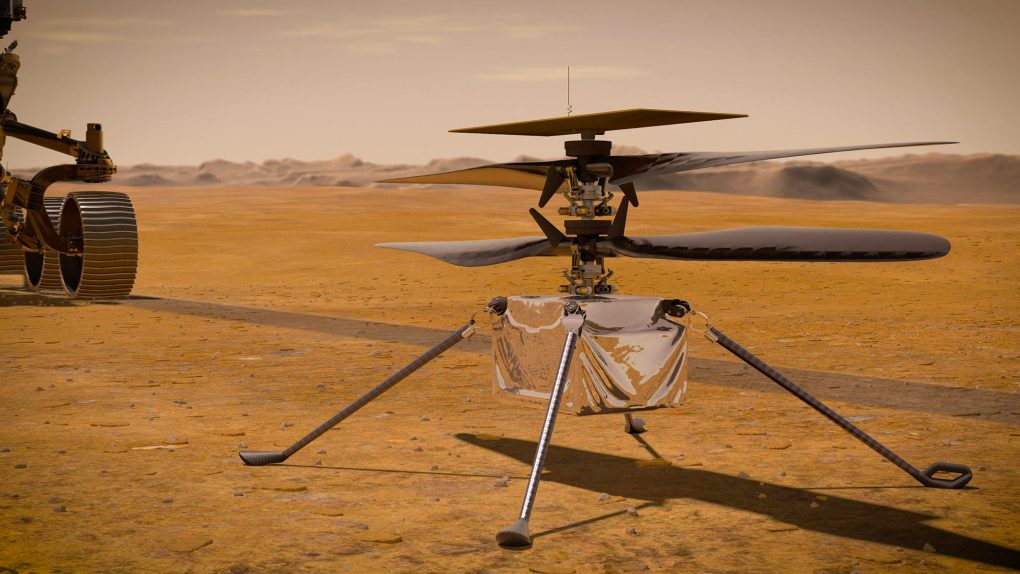- NASA powered up the batteries on its Mars helicopter for the first time during its trip to the Red Planet.
- The aircraft will prove that powered flight on Mars is possible, assuming everything goes according to plan.
- Future missions to Mars could include drones capable of traveling huge distances in short periods of time.
NASA’s Mars 2020 mission only just kicked off with the launch of the Perseverance rover and Mars Ingenuity helicopter, but the long trip to the Red Planet means the mission staff can perform all the required checks before the hardware lands. As NASA’s Jet Propulsion Laboratory explains in a new blog post, the Ingenuity helicopter just got its batteries charged in space for the first time, which is a pretty big deal.
According to JPL, the helicopter’s batteries need to be kept in the best possible health, and a small charge is apparently best for long-haul trips in space.
“During the eight-hour operation, the performance of the rotorcraft’s six lithium-ion batteries was analyzed as the team brought their charge level up to 35%,” JPL explains. “The project has determined a low charge state is optimal for battery health during the cruise to Mars.”
That’s pretty interesting on its own — you might not have guessed that a low charge state is somehow better for a battery flying through the chilly conditions of space — but it’s also a big achievement, and there are many more to come.
“This charge activity shows we have survived launch and that so far we can handle the harsh environment of interplanetary space,” MiMi Aung, project manager for the helicopter, said in a statement. “We have a lot more firsts to go before we can attempt the first experimental flight test on another planet, but right now we are all feeling very good about the future.”
Right now, the helicopter is strapped to the belly of the much larger Perseverance rover. Once the rover lands on Mars, the helicopter will be deployed, and, assuming all goes well, it will become the first aircraft to fly on another planet. That’s a ridiculously incredible achievement and one that NASA is looking forward to checking off on its list of accomplishments.
The helicopter isn’t equipped with any scientific equipment, so it won’t be traveling to new locations on the Martian surface in search of anything in particular. What it will do, however, is prove that powered flight on Mars is possible, and it could serve as inspiration for a future mission that could include drones capable of traversing huge distances and conducting science along the way.
Rovers like Perseverance are incredibly powerful in their ability to conduct science, but they’re also rather slow. A helicopter or other drone-like aircraft could explore huge areas of Mars in a much shorter timeline, and the Mars helicopter will help prove that such a thing is possible.








